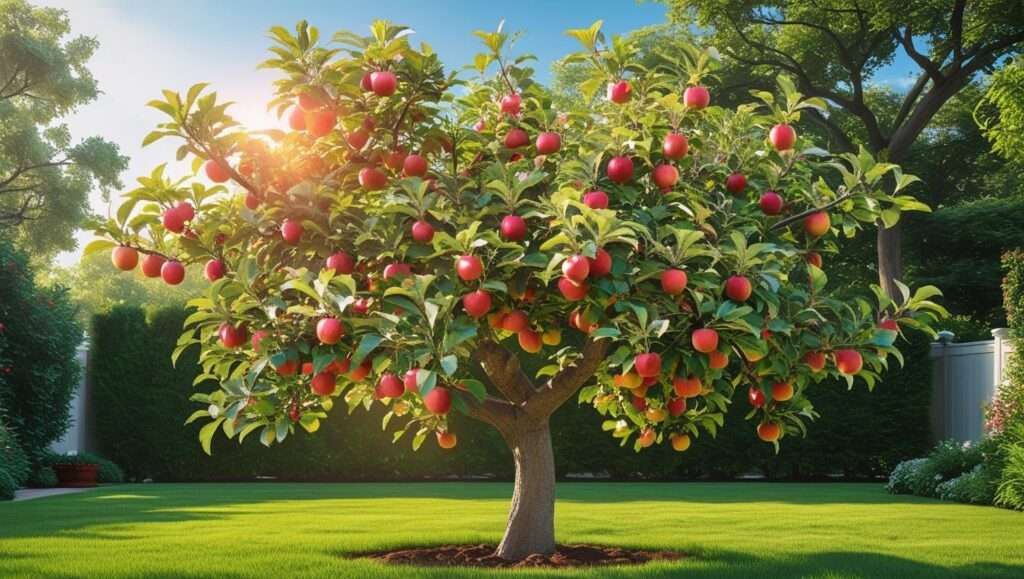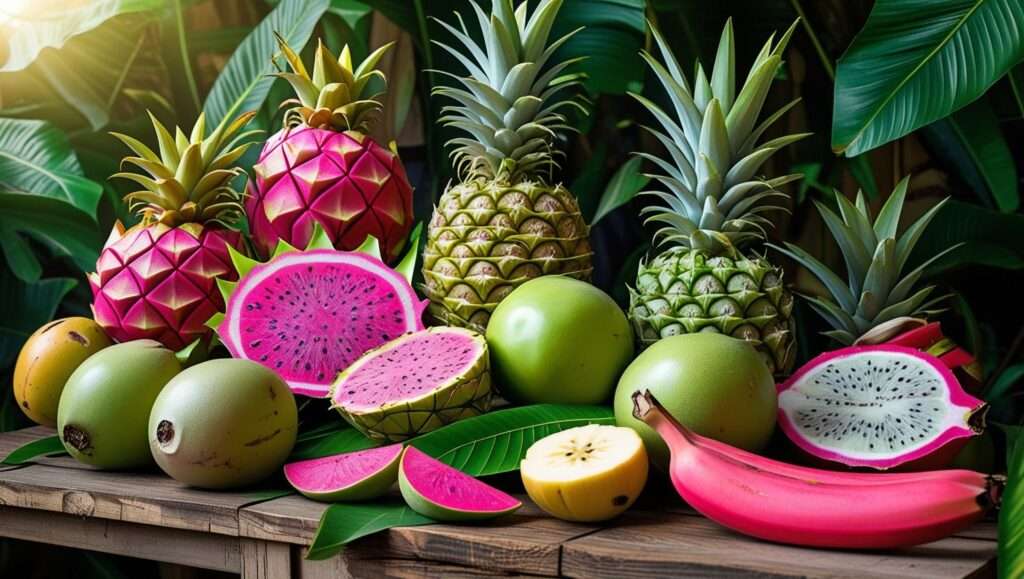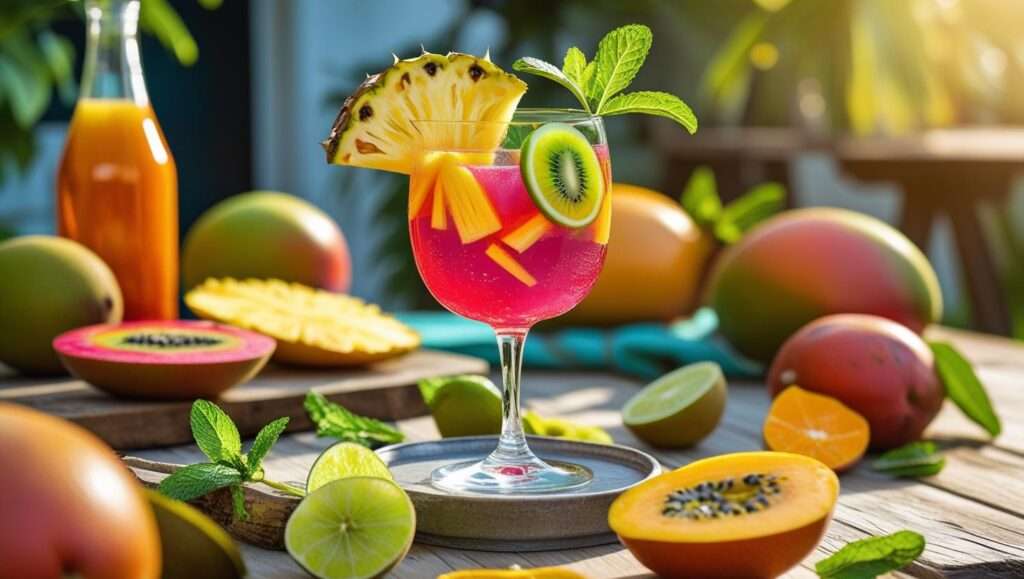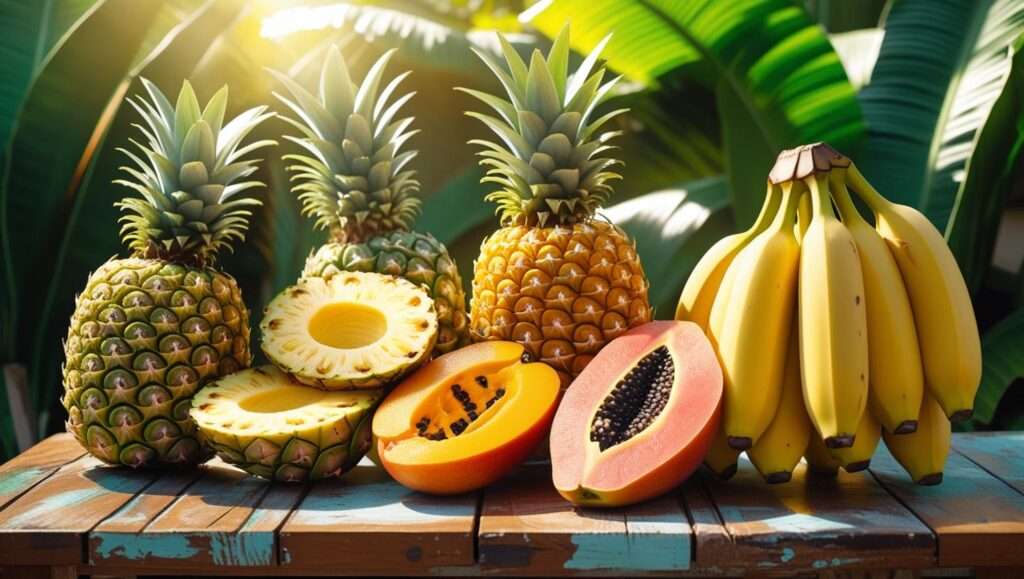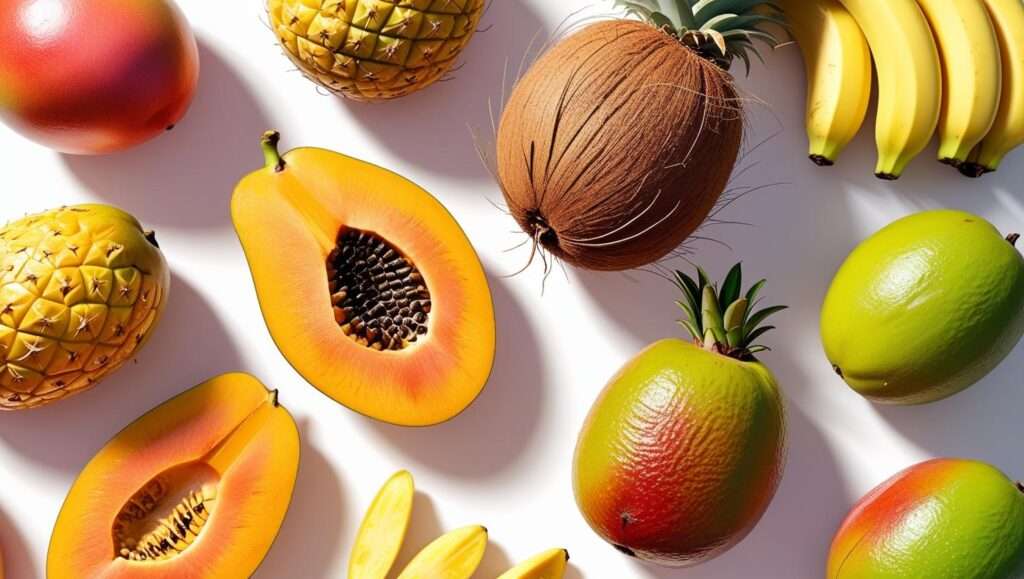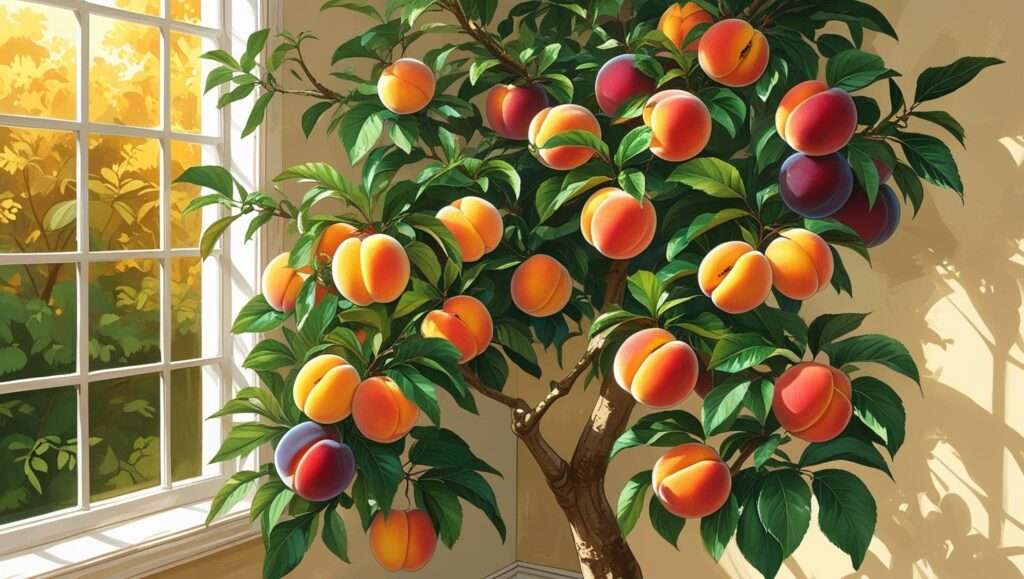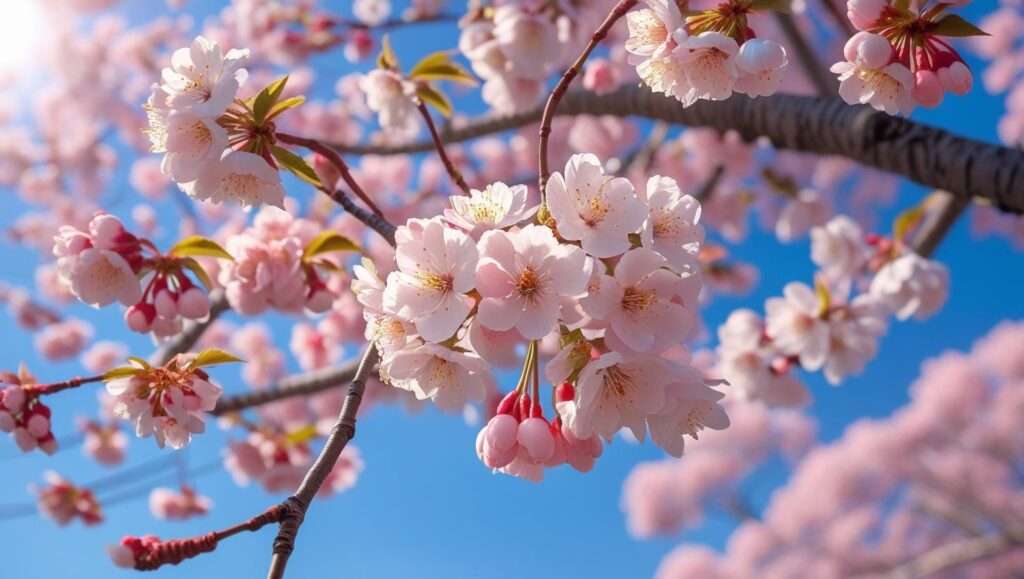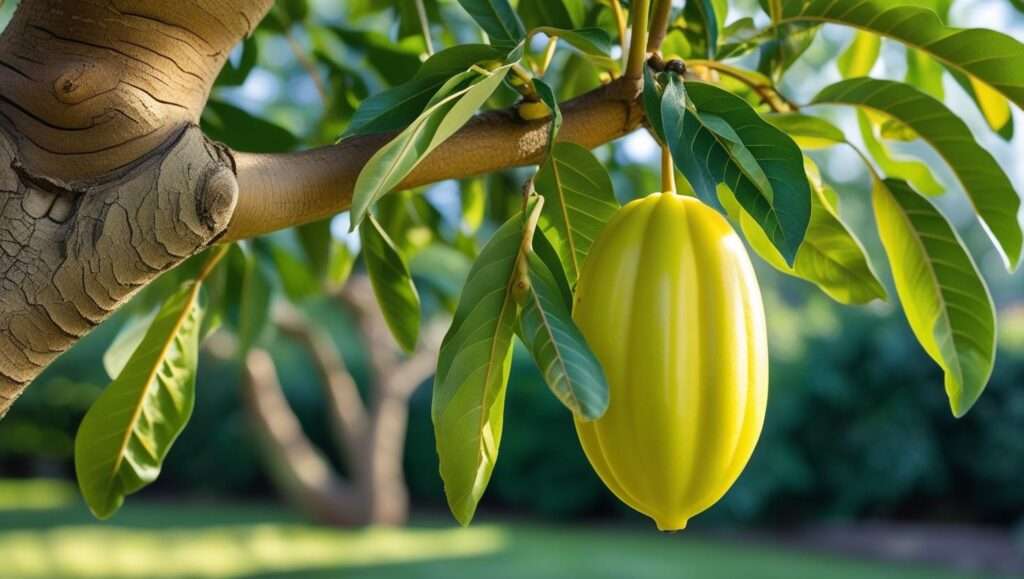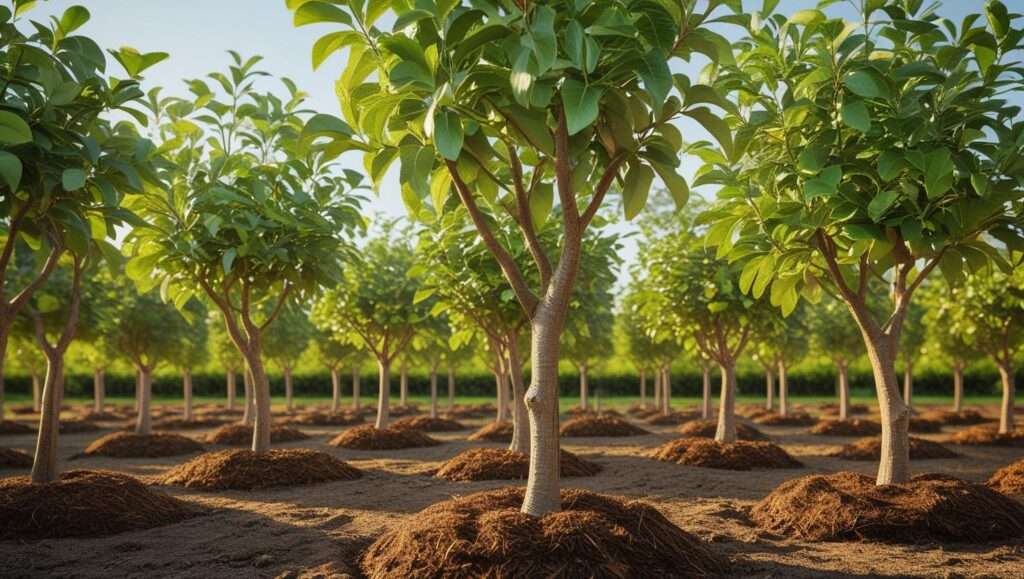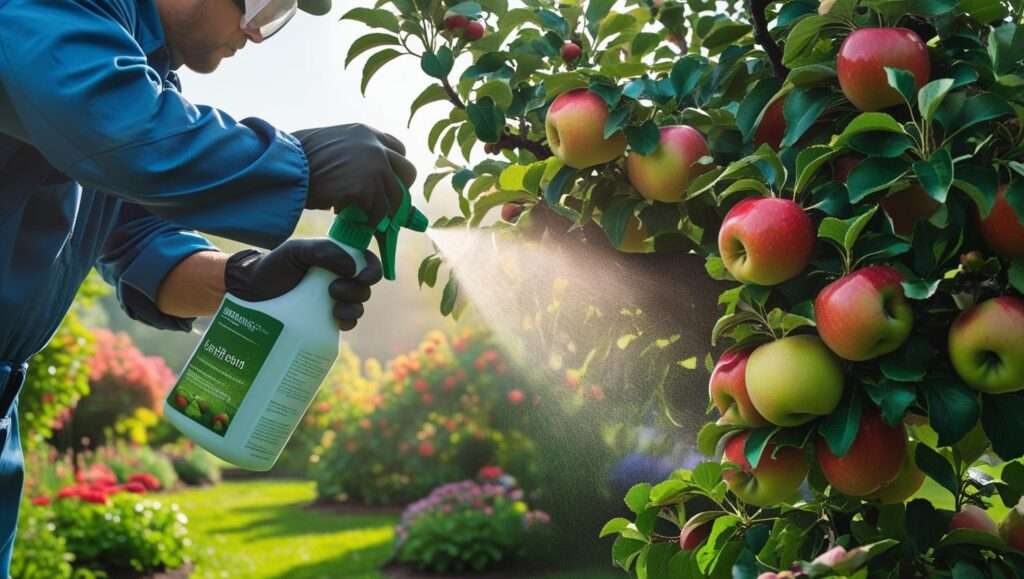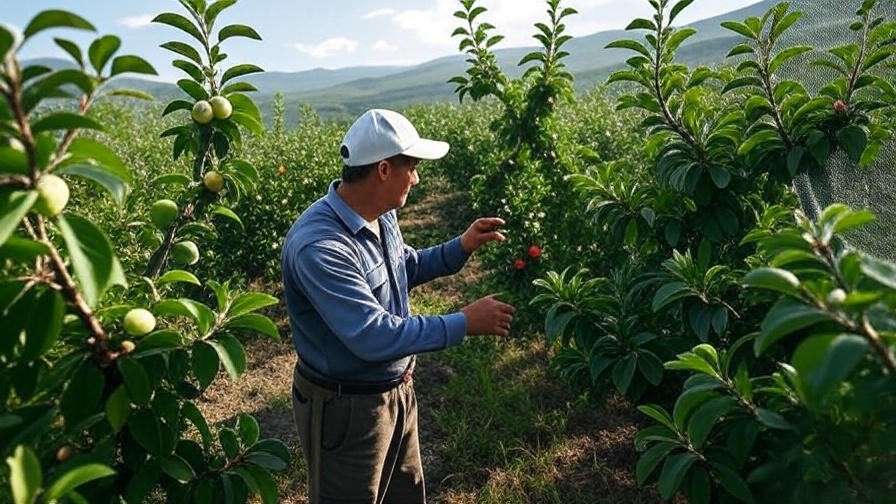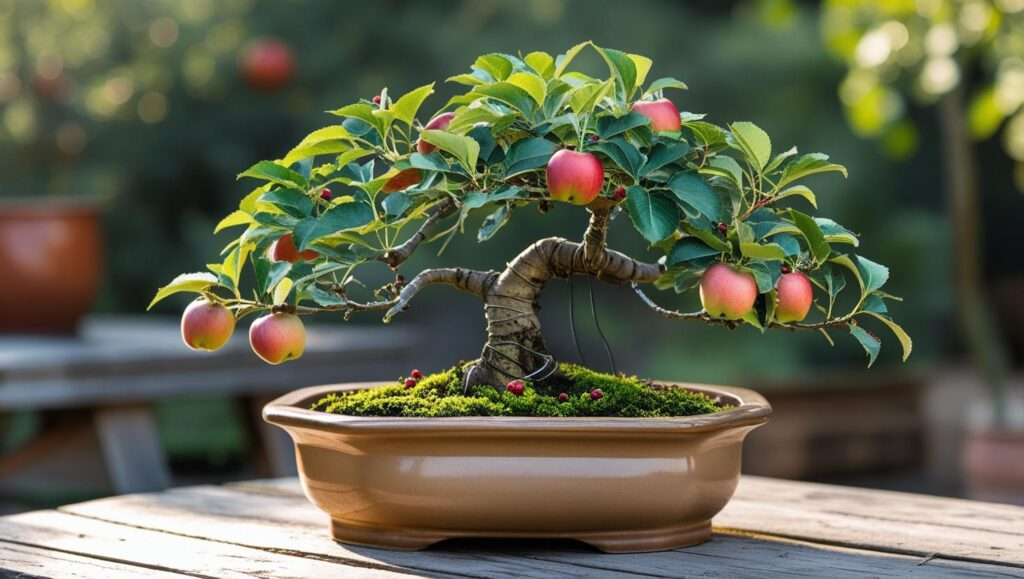Picture this: a lush backyard bursting with ripe, juicy fruit, all from a single tree that thrives without the hassle of cross-pollination. For gardeners dreaming of homegrown harvests but short on space or time, self-pollinating fruit trees are a game-changer. These low-maintenance wonders produce bountiful crops without needing a second tree, making them perfect for small gardens, urban patios, or beginner growers. In this comprehensive guide, we’ll explore the top 10 self-pollinating fruit trees, offering expert insights, practical care tips, and everything you need to grow your own fruit with ease. Backed by decades of horticultural expertise and research from trusted sources like the University of California Extension, this article will empower you to transform your garden into a fruitful oasis.
What Are Self-Pollinating Fruit Trees?

Definition and Benefits
Self-pollinating fruit trees, also known as self-fertile trees, are varieties capable of producing fruit without requiring pollen from another tree. Unlike cross-pollinating trees, which need a compatible partner for fruit set, self-pollinating trees have flowers that can pollinate themselves, ensuring reliable yields. This trait makes them ideal for small-space gardening, urban environments, or regions with limited pollinator activity.
The benefits are clear: self-pollinating trees save space, reduce maintenance, and offer consistent fruit production. According to the University of California Extension, self-fertile varieties can yield up to 20-30% more fruit in compact gardens compared to cross-pollinating counterparts under similar conditions. They’re also cost-effective, reducing the need for multiple trees or complex pollination strategies.
A common misconception is that self-pollinating trees require no care. While they don’t need a second tree, proper soil, water, and pruning are still essential for optimal health and yield.
Why Choose Self-Pollinating Trees?
Self-pollinating fruit trees are a top choice for gardeners with limited space, such as urban dwellers or those with small backyards. They’re also perfect for beginners who want a low-maintenance option or regions with fewer bees and pollinators. These trees thrive in diverse climates, from temperate to subtropical, making them versatile for various USDA hardiness zones. By choosing self-fertile varieties, you save money on additional plants and enjoy sustainable, homegrown produce that reduces reliance on commercial agriculture.
Top 10 Self-Pollinating Fruit Trees
1. Peach (Prunus persica)
Overview: Peaches are a favorite for their juicy, sweet fruit, and self-pollinating varieties like ‘Redhaven’ and ‘Elberta’ make them accessible for home gardeners. These trees produce vibrant, flavorful peaches without needing a pollinator partner.
Growing Conditions: Peaches thrive in USDA zones 5-9, preferring full sun (6+ hours daily) and well-drained, loamy soil with a pH of 6.0-6.5. They need moderate winter chill (600-900 hours below 45°F) for fruit set.
Care Tips: Prune annually in late winter to maintain an open canopy, which improves air circulation and reduces disease. Fertilize with a balanced 10-10-10 fertilizer in early spring. Watch for pests like peach tree borers and diseases like peach leaf curl, which can be managed with organic sprays like neem oil.
Yield Potential: A mature peach tree can yield 50-100 pounds of fruit annually, with harvests typically in mid to late summer.
2. Nectarine (Prunus persica var. nucipersica)
Overview: Nectarines, close cousins of peaches, offer smooth-skinned, sweet fruit. Self-fertile varieties like ‘Fantasia’ and ‘Independence’ are excellent for home gardens.
Unique Benefits: Nectarines are prized for their high sugar content and compact growth, making them suitable for small spaces or container gardening. Their vibrant flavors shine in fresh eating or desserts.
Challenges: Like peaches, nectarines are susceptible to peach leaf curl and require similar pest management. Regular monitoring and early intervention are key.
Growing Conditions: USDA zones 5-9, full sun, and well-drained soil. They need 500-800 chill hours.
3. Apricot (Prunus armeniaca)
Overview: Apricots like ‘Moorpark’ and ‘Harcot’ are self-pollinating, delivering sweet-tart fruit perfect for fresh eating, drying, or jamming.
Best Practices: Plant in USDA zones 5-8 with full sun and well-drained soil (pH 6.0-7.0). Apricots need 600-900 chill hours but are sensitive to late spring frosts. Protect blossoms with frost cloth during unexpected cold snaps.
Expert Tip: “To maximize apricot yields, mulch around the base to retain moisture and regulate soil temperature,” advises Dr. Sarah Thompson, a horticulturist at Oregon State University.
Yield Potential: Expect 50-75 pounds of fruit from a mature tree, typically harvested in early summer.
4. Plum (Prunus domestica)
Overview: Self-pollinating plums like ‘Santa Rosa’ and ‘Methley’ offer juicy, antioxidant-rich fruit in shades of purple, red, or yellow.
Growing Advice: Grow in USDA zones 5-9 with full sun and moderately fertile soil (pH 5.5-6.5). Thin fruit in early summer to prevent branch breakage and improve fruit size.
Fun Fact: Plums are packed with vitamins C and K, making them a nutritious addition to your garden.
Yield Potential: A single tree can produce 50-100 pounds of fruit, harvested from mid to late summer.
5. Cherry (Prunus avium or Prunus cerasus)
Overview: Self-fertile cherries include sour varieties like ‘Montmorency’ (ideal for pies) and sweet varieties like ‘Stella’. These trees are perfect for diverse climates.
Growing Conditions: USDA zones 4-8, full sun, and well-drained soil. Sour cherries are more cold-hardy than sweet cherries. Space trees 10-15 feet apart for optimal growth.
Practical Example: Urban gardeners can grow dwarf cherries like ‘Stella’ in large containers, ensuring good drainage and regular watering.
Yield Potential: Expect 20-50 pounds of fruit per tree, with sour cherries often producing earlier (2-3 years) than sweet varieties.
6. Apple (Malus domestica)
Overview: Self-pollinating apples like ‘Golden Delicious’ and ‘Granny Smith’ are reliable producers of crisp, versatile fruit.
Care Tips: Plant in USDA zones 4-8 with full sun and well-drained soil (pH 6.0-7.0). Prune in late winter to remove dead wood and promote airflow. Use organic pest control, like kaolin clay, to deter codling moths.
Data Point: Cornell University research indicates self-pollinating apple trees can yield 50-100 pounds of fruit per mature tree, with harvests from late summer to fall.
Growing Tip: Choose dwarf or semi-dwarf rootstocks for easier maintenance and smaller spaces.
7. Pear (Pyrus communis)
Overview: Self-fertile pears like ‘Conference’ and ‘Moonglow’ offer sweet, juicy fruit with minimal effort.
Growing Challenges: Pears are prone to fire blight, a bacterial disease. Choose resistant varieties and avoid over-fertilizing with nitrogen. Prune annually to maintain shape.
Expert Insight: Pairing pears with dwarf rootstocks reduces mature height to 8-12 feet, ideal for small gardens.
Yield Potential: Mature trees yield 50-80 pounds of fruit, typically harvested in late summer to early fall.
8. Fig (Ficus carica)
Overview: Nearly all figs, such as ‘Brown Turkey’ and ‘Celeste’, are self-pollinating, making them a top choice for warm climates.
Unique Benefits: Figs are drought-tolerant and thrive in USDA zones 7-10. Their sweet, chewy fruit is perfect for fresh eating or drying.
Practical Tip: In colder zones (5-6), grow figs in containers and bring them indoors during winter to protect against frost.
Yield Potential: A mature fig tree can produce 20-40 pounds of fruit, often yielding two crops per year in warm climates.
9. Pomegranate (Punica granatum)
Overview: Self-fertile pomegranates like ‘Wonderful’ and ‘Angel Red’ produce vibrant, antioxidant-rich fruit.
Growing Conditions: USDA zones 7-10, full sun, and well-drained soil. Pomegranates are heat-tolerant and require minimal water once established.
Health Benefits: Pomegranates are rich in vitamin C and polyphenols, appealing to health-conscious gardeners.
Yield Potential: Expect 20-30 pounds of fruit per tree, harvested in late summer to fall.
10. Citrus (Citrus spp.)
Overview: Self-pollinating citrus trees like ‘Meyer Lemon’ and ‘Satsuma Orange’ are ideal for warm climates or indoor growing.
Growing Advice: Grow in USDA zones 8-11 or in containers for colder regions. Use well-drained, slightly acidic soil (pH 5.5-6.5) and protect from frost.
Example: A Seattle gardener successfully grew a Meyer lemon in a sunny indoor space, harvesting 10-20 fruits annually.
Yield Potential: Yields vary by type, with lemons producing 20-50 fruits per tree and oranges slightly less.
How to Choose the Right Self-Pollinating Fruit Tree for Your Garden

Assessing Your Space and Climate
Selecting the perfect self-pollinating fruit tree starts with understanding your garden’s unique conditions. Begin by identifying your USDA hardiness zone, which determines which trees will thrive in your climate. For example, figs and pomegranates excel in warmer zones (7-10), while apples and cherries tolerate colder zones (4-8). Next, evaluate your available space. A small patio may suit a dwarf citrus or fig tree, while a larger backyard can accommodate a standard-sized peach or apple tree.
Sunlight is critical—most fruit trees require at least 6 hours of direct sun daily. Check your garden’s exposure and avoid shaded areas. Below is a quick reference table to help you match tree size to your space:
| Tree Type | Dwarf (8-10 ft) | Semi-Dwarf (12-15 ft) | Standard (20-30 ft) |
|---|---|---|---|
| Peach | Ideal for containers | Good for small yards | Needs large spaces |
| Apple | Patio-friendly | Medium yards | Orchards or large lots |
| Fig | Container or small garden | Larger yards | Rare for home gardens |
Soil and Water Requirements
Healthy soil is the foundation of a thriving fruit tree. Test your soil’s pH using a home kit (available at garden centers) and aim for a range of 6.0-7.0 for most self-pollinating trees, except citrus, which prefers 5.5-6.5. Amend heavy clay or sandy soils with organic compost to improve drainage and nutrient retention. Mulching with wood chips or straw helps maintain consistent soil moisture and temperature.
Water needs vary by tree type and climate. Newly planted trees require weekly deep watering (1-2 inches), while established trees may need less frequent irrigation, especially drought-tolerant figs and pomegranates. Overwatering can lead to root rot, so ensure proper drainage.
Matching Trees to Your Skill Level
Beginners should start with low-maintenance options like figs or citrus, which are forgiving of occasional care lapses. Peaches and pears, while rewarding, require more attention to pruning and pest management. Experienced gardeners may enjoy the challenge of cherries or apples, which demand precise care for optimal yields. Consider your time commitment—busy homeowners benefit from trees like ‘Brown Turkey’ figs, which thrive with minimal intervention.
Planting and Caring for Self-Pollinating Fruit Trees
Planting Guidelines

Proper planting sets the stage for long-term success. Follow these steps for best results:
- Choose the Right Time: Plant in early spring in cooler climates (zones 4-6) or fall in warmer zones (7-10) to allow roots to establish before extreme weather.
- Select a Site: Pick a sunny, well-drained location away from structures or shade-casting trees.
- Prepare the Hole: Dig a hole twice as wide and as deep as the root ball. Loosen the soil to encourage root growth.
- Plant the Tree: Place the tree so the graft union (the bulge where the rootstock meets the trunk) sits 2-3 inches above ground. Backfill with native soil mixed with compost.
- Water and Mulch: Water thoroughly after planting and apply a 2-3 inch layer of mulch, keeping it away from the trunk to prevent rot.
Ongoing Care Tips
Pruning: Annual pruning in late winter or early spring promotes healthy growth and fruit production. For peaches and nectarines, maintain an open-center shape to improve airflow. Apples and pears benefit from a central-leader structure. Remove dead, damaged, or crossing branches to prevent disease.
Fertilization: Apply a balanced 10-10-10 fertilizer in early spring, following package instructions for tree age and size. Organic options like composted manure or fish emulsion work well for eco-conscious gardeners. Avoid over-fertilizing, as excess nitrogen can reduce fruit set.
Pest and Disease Management: Common pests include aphids, codling moths, and peach tree borers. Use organic controls like neem oil or introduce beneficial insects like ladybugs. Diseases like fire blight (pears) or peach leaf curl require early intervention with copper-based fungicides. Regular monitoring is key—check leaves and fruit weekly for signs of trouble.
Expert Insight: “Consistent care is critical for self-pollinating trees,” says Dr. Jane Smith, a horticulturist at Oregon State University. “Annual soil testing ensures nutrient balance, which can boost fruit quality by up to 20%.”
Maximizing Fruit Production
Pollination Boosters
While self-pollinating trees don’t require a second tree, pollinators like bees and wind can enhance fruit set. To attract bees, plant companion flowers like lavender, marigolds, or clover near your trees. Avoid broad-spectrum pesticides, especially during flowering, as they harm beneficial insects. Hand-pollination with a small brush can also improve yields for trees like citrus grown indoors.
Thinning and Harvesting
Thinning fruit in early summer prevents branches from breaking and improves fruit size and quality. For peaches, plums, and apples, remove smaller or crowded fruits, leaving 4-6 inches between each. Harvest when fruit is fully colored and slightly soft to the touch. Store apples and pears in a cool, dark place for extended freshness; figs and citrus are best enjoyed fresh or preserved.
Troubleshooting Low Yields
If your tree produces little or no fruit, consider these common issues:
- Nutrient Imbalance: Test soil and adjust fertilization. A 2023 University of Florida study found balanced nitrogen levels can increase fruit set by 15%.
- Improper Pruning: Over-pruning can remove fruiting wood. Follow variety-specific pruning guides.
- Environmental Stress: Drought, frost, or poor soil drainage can reduce yields. Ensure consistent care and protect against extreme weather.
Self-Pollinating Fruit Trees for Small Spaces and Containers
Dwarf varieties of self-pollinating trees are ideal for patios, balconies, or urban gardens. Figs, citrus, and dwarf apples thrive in large containers (15-20 gallons) with proper drainage. Use a high-quality potting mix with perlite or vermiculite for aeration. Water container trees more frequently than in-ground trees, especially during hot weather, and fertilize monthly during the growing season.
Success Story: Maria, a Chicago gardener, grew a ‘Meyer Lemon’ tree in a sunny apartment corner, using a 20-gallon pot and grow lights. She harvested 15 lemons in her second year, proving urban gardening is possible with the right setup.
Container Tips:
- Choose dwarf varieties like ‘Celeste’ fig or ‘Trovita’ orange.
- Rotate pots every few months for even sun exposure.
- Protect containers from frost by wrapping them or moving indoors in winter.
Environmental and Economic Benefits

Growing self-pollinating fruit trees promotes sustainability by reducing reliance on commercial produce, which often travels thousands of miles. The USDA estimates a single fruit tree can save a household $50-100 annually on groceries while cutting carbon emissions from transportation. Homegrown fruit is fresher, tastier, and free of harmful pesticides, appealing to eco-conscious and health-focused gardeners. Plus, trees enhance your garden’s beauty and provide shade, boosting property value.
FAQs About Self-Pollinating Fruit Trees
Do self-pollinating fruit trees need bees?
No, but bees can increase fruit set by aiding pollination. Planting pollinator-friendly flowers nearby is a smart strategy.
Can I grow self-pollinating trees in containers?
Yes, dwarf varieties like figs and citrus are perfect for pots. Ensure good drainage and regular care.
How long until my tree produces fruit?
Figs and citrus may fruit in 2-3 years, while apples and pears take 4-6 years. Proper care speeds up the process.
What’s the easiest self-pollinating fruit tree for beginners?
Figs and citrus are low-maintenance and forgiving, ideal for novice gardeners.
Do self-pollinating trees need pruning?
Yes, pruning maintains tree health and maximizes fruit production. Follow variety-specific guidelines.
Self-pollinating fruit trees are a gardener’s dream, offering reliable harvests with minimal effort. From juicy peaches to tangy citrus, these top 10 varieties suit every climate, space, and skill level. By choosing the right tree, following expert planting and care tips, and boosting yields with pollinator-friendly practices, you can enjoy homegrown fruit for years to come. Start your fruit-growing journey today—pick one or two trees that match your garden and share your progress in the comments! For more tips, explore our articles on soil preparation and organic pest control, or consult your local extension service for personalized advice.

